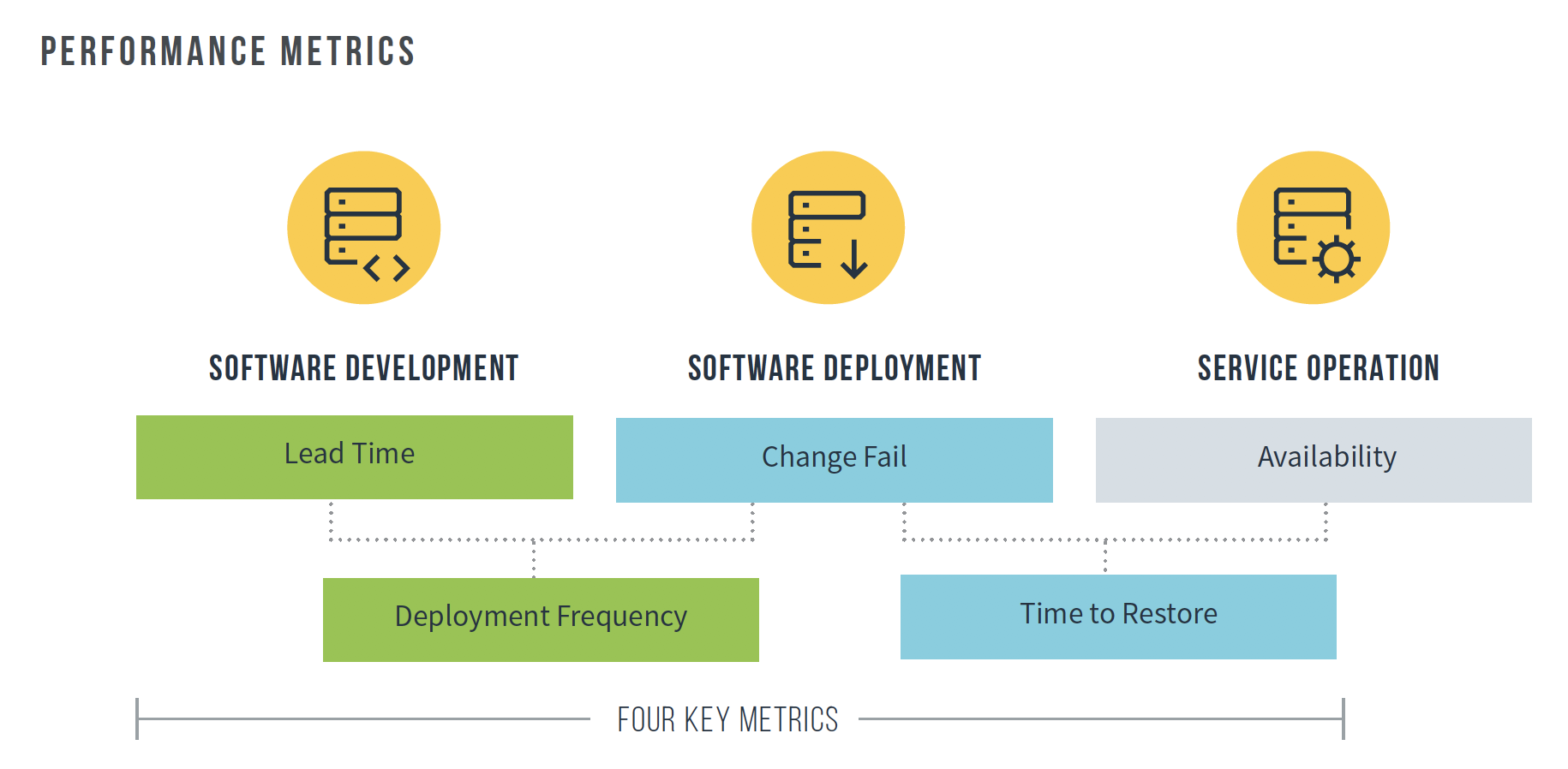Ignore these 5 signals at your peril
Tags: leadership transformation devops cloud Photo by Darius Bashar on Unsplash
Photo by Darius Bashar on Unsplash
“It is not necessary to change. Survival is not mandatory” - Edwards Deming
It has become clear that we are in this crisis for the long haul - and that the individual heroics, and oftentimes luck, that have gotten us through this far are not going to be enough to sustain us.
Leaders need to accept that uncertainty and unrest are the norm and that those of us that survive this particular crisis need to be ready for the next. The “gift” that has emerged from the COVID-19 pandemic is the data that reveals our particular strengths and vulnerabilities in times of uncertainty. This article explores five key signals in all the noise that we should use right now to learn about our performance under pressure and enable us to focus our energy and attention on what really matters.
Your people
The richest source of information about how your organisation is responding to COVID-19 is your people. Leaders should be redoubling their efforts to stay connected to their teams and taking every opportunity to collect vital “anecdata” about what is and isn’t working. Here are some conversation starters to uncover valuable information:
- What do you feel like you waste your time on?
- How has your ability to be creative been impacted?
- How have your stress levels changed over the past few months and why?
- How has the pandemic affected your ability to achieve your personal and professional goals?
But what happens when this signal is weak? Employees may not feel that they have the psychological safety to be honest with their leaders about what they are experiencing. This will reveal itself in disconnected responses lacking in substance. If this is the case - panic - your first priority needs to be pulling your teams together and (re-)creating the environment where people can be themselves and do their best work - regardless if they are dispersed or not. Don’t underestimate the toll that this is taking on your leaders - they need to be able to take care of their own needs before they are in a position to help others. By listening to and sharing stories learned from across your teams you will start to identify trends that can and should inform recovery efforts.
Portfolio activity
Take a look at your change portfolio. Identify the work that jumped the queue and shot straight to the top of the priority list during the last few months. What is this work telling you about the needs of your organisation when times get tough? Seek out “pet projects” that keep on getting delayed and pushed down the list. Is it time to get rid of these in order to reduce your portfolio bloat and quieten some of the noise? If something was not a priority during the crisis then is it really a priority after all? Remember - simplicity is the art of maximising the amount of work not done - and it will likely do a lot for morale to have a less daunting backlog on the horizon.
While you are there take stock of the following characteristics of your portfolio:
- Initiative size: Can items be broken down into smaller parts so that value can be extracted sooner and data gathered to guide future investment?
- Prioritisation criteria: Conventional wisdom says that you should focus on highest value, highest probability items first - but you will likely find that your definition of “value” is not as rigorous as you would hope.
- Portfolio scope: Hopefully your organisation is no longer maintaining a centrally managed portfolio but that decision making has been devolved much closer to those that are actually doing the work.
“Simplicity–the art of maximizing the amount of work not done–is essential.” - AgileManifesto.org
Infrastructure performance
Radical shifts in remote working patterns and demand for digital services have really put organisations’ IT infrastructure to the test. Many organisations have hit scalability and resilience issues and it is essential that correcting these are high on your improvement backlog. In a report published in late June, Virtana found that organisations that interrupted their cloud migration plans during the pandemic were 2.5 times more likely than those that continued them to have experienced outages and missed their agreed service levels. The survey also found that half of companies polled said the crisis had exposed a lack of access to the correct IT tools to run efficiently, and just under half highlighted an overall lack of visibility into their IT systems. When preparing for future disruptions we are more likely to want to over-provision capacity which is another compelling reason to be taking advantage of the dynamic scaling of resources (down as well as up) that the cloud offers. How good is your visibility of the health of your infrastructure and how well has your infrastructure supported you through the pandemic?
Developer productivity
Your organisation’s source code repository can tell you a lot about how developer productivity has been impacted during times of disruption. An analysis of developer productivity, work cadence, and collaboration conducted by Github in the early days of COVID-19 showed that developer activity remained largely consistent or increased as compared to last year, while the cadence of work had changed. Work days have gotten longer and more work is being done on weekends. Reviewing your organisation’s patterns of developer activity over the first half of this year will provide important insights into how your teams have fared relative to this global benchmark, and will help you to assess potential future impact on mental health and burnout.
Software delivery and operational performance
When it comes to measuring an organisation’s ability to develop and operate software systems nothing beats the following four key metrics published in the 2019 Accelerate State of DevOps Report by DevOps Research and Assessment (DORA). These are:
- Deployment frequency - how often you deploy code to production
- Lead time for changes - how long does it take to go from code commit to code successfully running in production
- Time to restore service - how long it takes to restore service when a service incident occurs
- Change fail rate - percentage of changes resulting in degraded service and subsequently requiring remediation
The study has shown that the highest performing companies do consistently better across these measures, and low performers do consistently worse. The study also identifies a strong correlation between availability measures and software delivery performance profiles, with availability reflecting how well teams define availability targets and their ability to track, and learn, from them. Monitoring these metrics over time gives you valuable insights into how you are performing relative to industry benchmarks. If you do not have these measures in place then putting them in should be high on your recovery backlog. Studying fluctuations over the past 6 months will help you to identify issues and impacts during the crisis, and will help you to track and improve into recovery.
 Accelerate: State of DevOps 2019 (p16)
Accelerate: State of DevOps 2019 (p16)
The increased focus on technology necessitated by this pandemic will remain critical as we build our resilience in anticipation of the next crisis. Organisations have realised that the need to continually evolve is no longer optional and that in order to stay relevant (and in some cases solvent) they need to rethink transformation efforts that until recently have only been performative.
We believe that the key to a successful transformation is to build the organisation-wide capability to make data-driven decisions based on experiential learning. This does not need to be a big production - an enterprise-wide transformation extravaganza - but should rather be based on building a deliberate practice of responding to what you learn. Take the lessons from the data and break it down into a backlog of discrete tasks, prioritise and work through them at a sustainable pace - reviewing regularly. Overtime these small incremental shifts will have a huge impact.
A lot will be forgiven through this crisis (for now at least). We have all been in this together and our customers and employees will be understanding of disruptions and missteps. This will not be the case in the future, especially when disruptions are more localised. Leaders must take action now to reflect on how they fared through the crisis, uncover the critical data, and do something with it.
Tania leads the Enterprise DevOps and Transformation practice at Mechanical Rock, Australia’s leading Cloud Native and DevOps consultancy: “We are committed to helping our West Australian tech community to emerge from this crisis stronger than before. Please reach out if you would like to chat about any of the ideas discussed here or if you would like some help building resilience in your software delivery organisation.”
